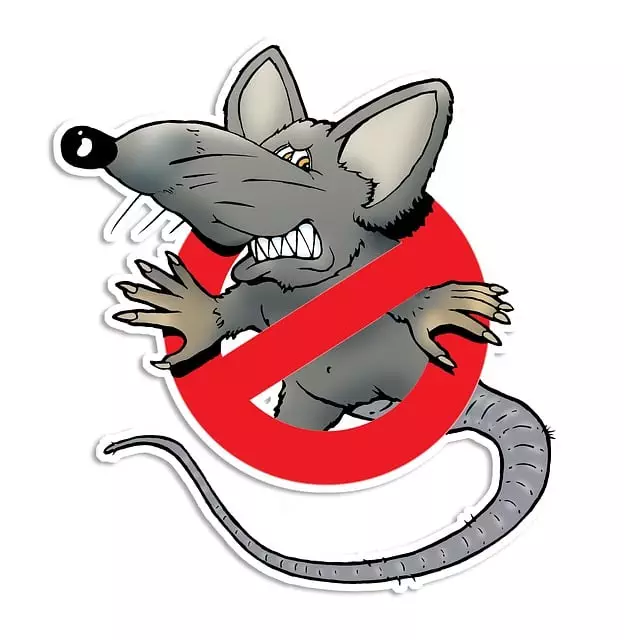Commercial rodent control is a specialized service addressing infestations in businesses like offices, stores, and food establishments. It involves inspections, hazard identification, customized plans, monitoring, and adherence to health/safety regulations. Key strategies include understanding rodent behavior (mice, rats), early detection signs, proactive maintenance, strategic baiting/trapping, and non-toxic methods. Regular inspections, cleaning, sealing entry points, and tailored control measures prevent infestations while ensuring a safe, hygienic environment. Professional programs have shown success in urban areas, with case studies highlighting effective, durable results through science-backed solutions.
Commercial rodent control is a critical aspect of maintaining healthy, safe, and productive workspaces. This comprehensive guide delves into the essentials of managing rodents in commercial settings. From understanding basic concepts and identifying signs of infestation to exploring legal considerations and eco-friendly extermination methods, we provide an in-depth look at effective rodent control strategies. Learn about common rodents, prevention tactics, best practices, and successful case studies, empowering you to implement robust rodent control programs.
Understanding Commercial Rodent Control: The Basics

Commercial rodent control is a specialized service that addresses infestations of rodents in commercial settings, such as offices, stores, and food establishments. It involves a comprehensive approach to prevent, detect, and eliminate rodent presence, focusing on strategies that are both effective and compliant with health and safety regulations. This process typically includes inspections, hazard identification, tailored treatment plans, and ongoing monitoring.
The basics of commercial rodent control start with understanding the behavior and biology of rodents. Common pests like rats and mice thrive in areas with accessible food, water, and shelter. By sealing entry points, maintaining cleanliness, and employing strategic baiting and trapping methods, professionals can disrupt this lifecycle. Regular maintenance and proactive measures are key to preventing infestations, ensuring a safe and hygienic environment for businesses and their patrons.
Identifying Signs of Rodent Infestation in Commercial Spaces

Recognizing the signs of a rodent infestation is crucial for effective commercial rodent control. Business owners should be vigilant and regularly inspect their properties, especially in areas prone to pest intrusion, such as storage rooms, kitchens, and basements. Common indicators include visible evidence like droppings (often black or brown with distinct ridges), gnaw marks on packaging, walls, or floors, and strange odors. Rodents are also known to leave behind hairs or footprints, and you might notice peculiar noises coming from hidden spaces.
Moreover, it’s essential to keep an eye out for behavioral changes among employees and customers. Unusual behavior like increased absenteeism, sudden changes in work performance, or customer complaints about a musty smell could point to an underlying rodent problem. Prompt action is vital; early detection allows for more effective rodent control methods, minimizing damage to property and maintaining a healthy environment for everyone on the premises.
Common Types of Rodents and Their Behavior Patterns

Rodents, a diverse group of mammals, include common pests like mice and rats, which pose significant challenges for commercial properties. Understanding their behavior is crucial in implementing effective rodent control strategies. Mice, being highly adaptable, are excellent climbers and can enter buildings through tiny gaps, preferring areas with access to food, water, and shelter. They are most active at night, leaving distinct signs like droppings, gnaw marks, and scent trails that can indicate their presence.
Rats, on the other hand, are larger and less agile but possess superior problem-solving skills. They prefer open spaces and are often found near water sources. Rats are also more social, traveling in packs and establishing complex nesting sites within structures. Their behavior patterns make them adept at evading traditional traps, underlining the need for specialized rodent control methods tailored to their unique behaviors to ensure successful eradication and prevention.
Legal and Health Considerations for Rodent Management

When addressing commercial rodent control, it’s crucial to understand the legal and health considerations that underpin effective management strategies. Local regulations play a pivotal role in dictating the methods and practices employed to combat rodent infestations. Non-compliance can lead to hefty fines, business disruptions, and potential damage to reputations. Therefore, businesses must stay informed about regional guidelines pertaining to pest control, ensuring all treatments are approved and applied responsibly.
From a health perspective, rodents pose significant risks, transmitting diseases such as salmonella, leptospirosis, and plague. Their presence can also trigger allergic reactions in sensitive individuals. As such, rodent management practices must prioritize the safety of employees and customers alike. This includes proper training for staff involved in handling traps or chemicals, adherence to personal protective equipment (PPE) guidelines, and ensuring all treatments are conducted during off-peak hours to minimize disruption and potential exposure.
Effective Prevention Strategies for Commercial Properties

Implementing robust prevention strategies is key to achieving effective rodent control in commercial properties. Regular inspections are crucial, as they allow for early detection of potential entry points and signs of infestation. Commercial spaces, with their diverse environments, require tailored approaches. For instance, storing food items in airtight containers, maintaining clean dining areas, and ensuring proper garbage disposal can significantly deter rodents seeking sustenance.
Additionally, sealing gaps around utilities, repairing broken pipes or wires, and installing weatherstripping on doors are practical measures that limit access points. Regular maintenance, coupled with a proactive mindset, creates an environment less welcoming to rodents. By combining these preventive tactics, commercial property managers can effectively reduce the risk of rodent infestations, thereby enhancing overall hygiene and safety standards.
Best Practices for Implementing Commercial Rodent Control Programs

Implementing effective commercial rodent control programs requires a multi-faceted approach. Start by conducting a thorough inspection to identify points of entry, potential food sources, and hiding places. This knowledge is crucial for tailoring your control methods accordingly. Regular cleaning and sanitation are key; maintaining a clean environment significantly reduces attractions for rodents.
Traps, both live and lethal, should be strategically placed based on rodent behavior and trails. For sensitive areas, consider non-lethal methods like repellents or exclusion techniques. Regular monitoring is essential; inspect regularly to detect early signs of infestation and assess the effectiveness of your control measures. Adapting these best practices ensures a comprehensive and efficient commercial rodent control strategy.
Safe and Eco-Friendly Methods for Rodent Extermination

When it comes to rodent control, there are safer and more eco-friendly methods that go beyond traditional toxic traps and poisons. These alternatives prioritize minimizing environmental impact while effectively managing infestations. One such approach is using natural repellents like peppermint oil or cedarwood shavings, which rodents find unpleasant, deterring them without harming either the pests or the ecosystem.
Another innovative method involves the use of catnip, known for its repellent properties against rodents. Setting up ultrasonic devices that emit high-frequency sounds also proves effective, as rodents are sensitive to these frequencies and tend to avoid them. Additionally, proper sanitation and sealing entry points can significantly reduce rodent populations by eliminating food sources and hiding places. These non-toxic, eco-conscious practices not only protect the environment but also ensure a healthier living space for both humans and other animals.
Case Studies: Successful Implementation of Rodent Control Programs

Successful implementation of rodent control programs has been demonstrated in various case studies, highlighting the importance and effectiveness of professional interventions. In urban areas, where rodents often thrive due to abundant food sources and shelter, commercial rodent control services have significantly reduced pest populations. One notable example involves a large metropolitan area that experienced a surge in rat infestations. By employing a comprehensive strategy including trapping, baiting, and habitat modification, the service provider successfully eliminated the rat population within several months. This achievement was not only measured by the reduction in visible rats but also through the decrease in related damages, such as property damage and health risks associated with rodents.
Another compelling case study focuses on a commercial facility where persistent mouse problems disrupted operations. The rodent control team implemented advanced monitoring techniques to identify high-risk areas, followed by targeted treatments using non-toxic baits. In conjunction with improved sanitation practices, this dual approach led to a substantial drop in mouse activity and a significant increase in customer satisfaction. These case studies underscore the value of tailored, science-backed solutions in addressing rodent control challenges, demonstrating that professional intervention can lead to durable results and enhanced environments.
